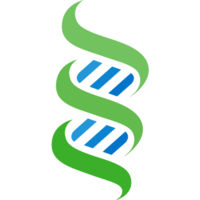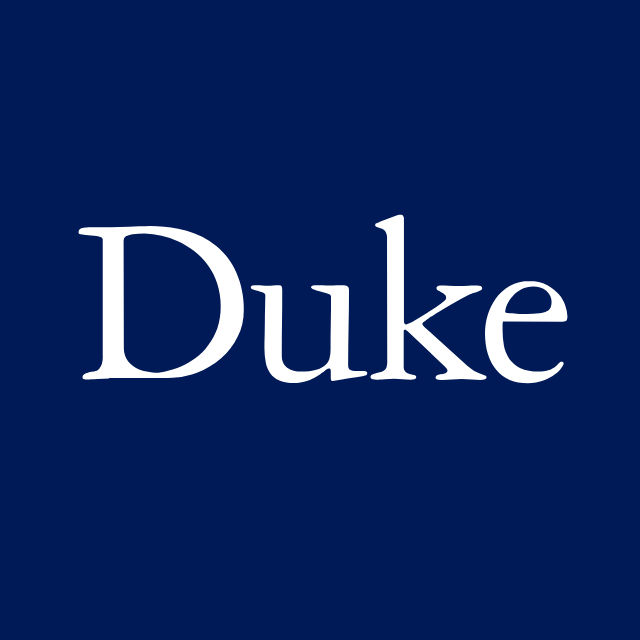预约演示
更新于:2025-05-07
LAMP-1
更新于:2025-05-07
基本信息
别名 CD107 antigen-like family member A、CD107a、LAMP-1 + [5] |
简介 Lysosomal membrane glycoprotein which plays an important role in lysosome biogenesis, lysosomal pH regulation, autophagy and cholesterol homeostasis (PubMed:37390818). Acts as an important regulator of lysosomal lumen pH regulation by acting as a direct inhibitor of the proton channel TMEM175, facilitating lysosomal acidification for optimal hydrolase activity (PubMed:37390818). Also plays an important role in NK-cells cytotoxicity (PubMed:2022921, PubMed:23632890). Mechanistically, participates in cytotoxic granule movement to the cell surface and perforin trafficking to the lytic granule (PubMed:23632890). In addition, protects NK-cells from degranulation-associated damage induced by their own cytotoxic granule content (PubMed:23847195). Presents carbohydrate ligands to selectins (PubMed:7685349).
(Microbial infection) Acts as a receptor for Lassa virus glycoprotein (PubMed:24970085, PubMed:25972533, PubMed:27605678, PubMed:28448640). Promotes also fusion of the virus with host membrane in less acidic endosomes (PubMed:29295909).
(Microbial infection) Supports the FURIN-mediated cleavage of mumps virus fusion protein F by interacting with both FURIN and the unprocessed form but not the processed form of the viral protein F. |
关联
6
项与 LAMP-1 相关的药物作用机制 CMV pp65抑制剂 [+1] |
最高研发阶段临床2期 |
首次获批国家/地区- |
首次获批日期1800-01-20 |
作用机制 LAMP-1抑制剂 [+1] |
在研机构 |
原研机构 |
在研适应症 |
非在研适应症- |
最高研发阶段临床2期 |
首次获批国家/地区- |
首次获批日期1800-01-20 |
靶点 |
作用机制 LAMP-1抑制剂 |
在研适应症 |
非在研适应症- |
最高研发阶段临床1期 |
首次获批国家/地区- |
首次获批日期1800-01-20 |
7
项与 LAMP-1 相关的临床试验NCT05422781
A Phase I, Open Label, First In Humans (FIH), Study To Evaluate The Safety, Tolerability And Immunogenicity Of 4 mg Of ITI-3000 In Patients With Polyomavirus-Positive Merkel Cell Carcinoma (MCC)
This Phase I clinical trial will evaluate the safety, tolerability, and immunogenicity of 4 mg doses of ITI-3000 in participants with polyomavirus-positive Merkel cell carcinoma (MCC).
开始日期2022-06-13 |
申办/合作机构 |
NCT03927222
I-ATTAC: Improved Anti-Tumor Immunotherapy Targeted Against Cytomegalovirus in Patients With Newly-Diagnosed WHO Grade IV Unmethylated Glioma
This single-arm phase II study will assess the impact of tetanus pre-conditioning and adjuvant Granulocyte Macrophage Colony Stimulating Factor (GM-CSF) on overall survival of patients newly diagnosed with World Health Organization (WHO) Grade IV glioblastoma who have undergone definitive tumor resection, are cytomegalovirus (CMV) positive and unmethylated, and completed standard temozolomide (TMZ) and radiation treatment. After completion of the standard of care radiotherapy with concurrent TMZ, patients will receive 1 cycle of dose-intensified TMZ followed by pp65-loaded dendritic cell (DC) vaccination beginning on day 23.
开始日期2019-09-30 |
申办/合作机构 |
NCT03615404
A Phase 1 Trial of CMV RNA-Pulsed Dendritic Cells With Tetanus-Diphtheria Toxoid Vaccine in Pediatric Patients and Young Adults With WHO Grade IV Glioma, Recurrent Malignant Glioma, or Recurrent Medulloblastoma
The purpose of this study is to determine the feasibility and safety of administering CMV RNA-pulsed dendritic cells (DCs), also known as CMV-DCs, to children and young adults up to 35 years old with nWHO Grade IV glioma, recurrent malignant glioma, or recurrent medulloblastoma. Evidence for efficacy will also be sought. This will be a phase 1 study evaluating CMV-DC administration with tetanus toxoid (Td) preconditioning and Granulocyte Macrophage-Colony Stimulating Factor (GM-CSF) adjuvant in children and young adults up to 35 years old with WHO grade IV glioma, recurrent malignant glioma, or recurrent medulloblastoma. This safety study will enroll a maximum of 10 patients.
开始日期2018-10-05 |
申办/合作机构 |
100 项与 LAMP-1 相关的临床结果
登录后查看更多信息
100 项与 LAMP-1 相关的转化医学
登录后查看更多信息
0 项与 LAMP-1 相关的专利(医药)
登录后查看更多信息
3,936
项与 LAMP-1 相关的文献(医药)2025-12-31·Emerging Microbes & Infections
Vδ2 T-cells response in people with Mpox infection: a three-month longitudinal assessment
Article
作者: Maggi, Fabrizio ; Oliva, Alessandra ; Coppola, Andrea ; Mondi, Annalisa ; Fontana, Carla ; Notari, Stefania ; Messina, Francesco ; Antinori, Andrea ; Tempestilli, Massimo ; Cimini, Eleonora ; Prota, Gianluca ; Girardi, Enrico ; Matusali, Giulia ; Mazzotta, Valentina ; Tartaglia, Eleonora
2025-12-01·Molecular Biology Reports
DNMT1 inhibition improves the activity of memory-like natural killer cells by enhancing the level of autophagy
Article
作者: Zhao, Yaling ; Li, Yanhong ; Guo, Chong ; Zhang, Fujia ; Cheng, Shenju ; Li, Yixun ; Wu, Kun ; Zeng, Yun ; Luo, Shan
2025-12-01·Medical Microbiology and Immunology
In silico identification and ex vivo evaluation of Toxoplasma gondii peptides restricted to HLA-A*02, HLA-A*24 and HLA-B*35 alleles in human PBMC from a Colombian population
Article
作者: Valencia-Jaramillo, María Camila ; Cardona, Néstor ; Gómez-Marín, Jorge Enrique ; Arenas, Ailan Farid ; Valencia-Hernández, Juan David ; Vargas-Montes, Mónica
55
项与 LAMP-1 相关的新闻(医药)2025-04-28
·医药速览
ADC(抗体偶联药物)内吞的常用方法以下是ADC(抗体药物偶联物)内吞检测方法的表格汇总,包括使用仪器、试剂、应用场景、试剂成本和优缺点:此外还有基于HTRF的ADC内化检测HTRF技术结合了荧光共振能量转移(FRET)和时间分辨荧光(TRF)的特点。它使用一对特异性标记的荧光供体和受体,当两者靠近时(通常在1-10 nm范围内),供体的能量会转移到受体,从而产生特定的荧光信号。通过检测这种信号,可以定量分析目标分子的相互作用或内化过程。 总结:低成本方法:荧光显微镜、流式细胞术和ELISA适合初步筛选和定量分析。高分辨率方法:共聚焦显微镜和电子显微镜适合高精度观察。高灵敏度方法:放射性标记法、质谱分析和FRET适合定量和分子相互作用研究。实时监测方法:活细胞成像和SPR适合动态过程研究。根据实验需求和预算,选择合适的方法可以更高效地研究ADC的内吞机制。内吞到endosome和lysosome检测ADC(抗体药物偶联物)内吞到内体(endosome)和溶酶体(lysosome)的量是研究ADC细胞内运输和药物释放机制的关键步骤。以下是常用的检测方法及其原理、实验步骤和优缺点: 1. 荧光标记与共聚焦显微镜成像原理 利用荧光标记的ADC和特定的细胞器标记物(如内体和溶酶体的荧光探针),通过共聚焦显微镜观察ADC与这些细胞器的共定位。 试剂荧光标记的ADC:如Alexa Fluor 488标记的ADC。 细胞器标记物: 内体标记:如Early Endosome Marker (EEA1)、Rab5-GFP。 溶酶体标记:如Lysotracker Red、LAMP1抗体 细胞染色剂:如DAPI(细胞核染色)。 仪器共聚焦显微镜。 实验步骤将细胞接种在共聚焦专用培养皿中。加入荧光标记的ADC,孵育一定时间(如1-6小时)。加入内体或溶酶体标记物,孵育30分钟至1小时。固定细胞(如用4%多聚甲醛)。使用共聚焦显微镜成像,分析ADC与内体/溶酶体的共定位。优点直观,可观察ADC在细胞内的分布。高分辨率,可区分不同细胞器。 缺点半定量,难以精确测量ADC的量。操作复杂,设备昂贵。2. 流式细胞术结合细胞器分离原理通过细胞器分离技术(如密度梯度离心)分离内体和溶酶体,再利用流式细胞术定量检测ADC在这些细胞器中的分布。试剂荧光标记的ADC:如FITC标记的ADC。细胞器分离试剂:如Percoll密度梯度介质。细胞器标记抗体:如抗EEA1(内体)、抗LAMP1(溶酶体)。仪器流式细胞仪。超速离心机。实验步骤将细胞与荧光标记的ADC孵育一定时间。裂解细胞,分离内体和溶酶体(如通过密度梯度离心)。用流式细胞仪检测分离的细胞器中荧光信号。使用细胞器特异性抗体确认分离效果。优点可定量分析ADC在内体和溶酶体中的分布。高通量,适合大规模实验。 缺点细胞器分离步骤复杂,可能损失部分样品。需要优化分离条件。3. 基于抗体的定量检测(如ELISA)原理通过细胞器分离技术分离内体和溶酶体,再利用ELISA定量检测ADC在这些细胞器中的含量。试剂ADC特异性抗体:用于捕获ADC。细胞器分离试剂:如Percoll密度梯度介质。细胞器标记抗体:如抗EEA1(内体)、抗LAMP1(溶酶体)。仪器酶标仪。超速离心机。实验步骤将细胞与ADC孵育一定时间。裂解细胞,分离内体和溶酶体。使用ADC特异性抗体进行ELISA检测。定量分析ADC在内体和溶酶体中的含量。 优点高灵敏度,可定量检测。适合大规模实验。 缺点细胞器分离步骤复杂。需要特异性抗体。4. 活细胞成像与动态分析原理利用活细胞成像系统实时观察ADC从内体到溶酶体的运输过程,并通过荧光信号定量分析。试剂荧光标记的ADC:如pH敏感的荧光标记物(如pHrodo)。细胞器标记物:如LysoTracker(溶酶体)。仪器活细胞成像系统。实验步骤将细胞与荧光标记的ADC孵育。加入溶酶体标记物(如LysoTracker)。使用活细胞成像系统实时观察ADC的运输过程。分析荧光信号变化,定量ADC在内体和溶酶体中的分布。优点实时动态观察。可定量分析运输过程。缺点设备昂贵。 数据分析复杂。5. 质谱分析原理通过细胞器分离技术分离内体和溶酶体,再利用质谱定量检测ADC及其代谢产物。试剂细胞器分离试剂:如Percoll密度梯度介质。 质谱标准品:用于定量分析。仪器质谱仪。超速离心机。 实验步骤将细胞与ADC孵育一定时间。裂解细胞,分离内体和溶酶体。使用质谱仪检测ADC及其代谢产物。定量分析ADC在内体和溶酶体中的分布。优点高灵敏度,可检测代谢产物。可定量分析。缺点设备昂贵。 样品制备复杂。 根据实验需求和设备条件,选择合适的方法可以更高效地研究ADC在内体和溶酶体中的分布和运输机制。推文用于传递知识,如因版权等有疑问,请于本文刊发30日内联系医药速览。原创内容未经授权,禁止转载至其他平台。有问题可发邮件至yong_wang@pku.edu.cn获取更多信息。©2021 医药速览 保留所有权利往期链接“小小疫苗”养成记 | 医药公司管线盘点 人人学懂免疫学| 人人学懂免疫学(语音版)综述文章解读 | 文献略读 | 医学科普|医药前沿笔记PROTAC技术| 抗体药物| 抗体药物偶联-ADC核酸疫苗 | CAR技术| 化学生物学温馨提示医药速览公众号目前已经有近12个交流群(好学,有趣且奔波于医药圈人才聚集于此)。进群加作者微信(yiyaoxueshu666)或者扫描公众号二维码添加作者,备注“姓名/昵称-企业/高校-具体研究领域/专业”,此群仅为科研交流群,非诚勿扰。简单操作即可星标⭐️医药速览,第一时间收到我们的推送①点击标题下方“医药速览” ②至右上角“...” ③点击“设为星标
抗体药物偶联物诊断试剂
2025-04-18
·生物谷
你有没有注意到,身边的老年人中,有些人手会不由自主地颤抖,走路时步伐变得缓慢而僵硬,甚至拿筷子夹菜都会显得吃力?这些看似普通的衰老现象,其实可能是帕金森病(Parkinson’s Disease, PD)的早期信号。帕金森病作为一种常见的神经退行性疾病,正在悄悄影响全球超过1000万人的生活。而更令人揪心的是,这种疾病目前无法治愈,患者只能通过药物或手术延缓病情进展。然而,科学的探索从未停止。近年来,科学家们发现,帕金森病的发病机制与细胞内的“垃圾处理系统”——溶酶体的功能障碍密切相关。而这篇发表在《Science》杂志上的研究,更是揭示了一个令人兴奋的新发现:一个名为COMMD3的基因及其相关的蛋白质复合体,可能是解开帕金森病谜团的关键线索。这篇文章不仅为帕金森病的发病机制提供了全新的视角,还为未来的治疗策略打开了新的大门。实验的意义与目的帕金森病的发病机制复杂,目前已知的一个重要风险因素是GBA1基因的突变。GBA1基因编码的是一种名为葡萄糖脑苷脂酶(GCase)的溶酶体酶,它负责分解细胞内的脂质垃圾。如果GBA1基因出了问题,溶酶体的“清洁能力”就会下降,导致垃圾堆积,最终引发神经细胞的死亡。然而,科学家们发现,GBA1基因突变并不是帕金森病的唯一原因。许多携带GBA1突变的人并没有发病,而一些没有GBA1突变的人却患上了帕金森病。这说明,一定还有其他基因在“帮凶”角色。为了找到这些隐藏的“帮凶”,研究团队采用了CRISPRi基因筛选技术,在全球范围内扫描了数万个基因,试图找出那些能够调节溶酶体功能的关键基因。实验对象与流程实验的对象是人类胚胎肾细胞(HEK细胞),这是一种常用的实验模型。科学家们首先用一种特殊的荧光底物(PFB-FDGlu)来测量溶酶体中GCase的活性。这个底物会在溶酶体内被分解,释放出荧光信号,信号越强,说明溶酶体的“清洁能力”越强。接下来,研究团队利用CRISPRi技术,逐个“关闭”细胞中的基因,观察哪些基因的缺失会导致溶酶体功能异常。经过13天的实验,他们通过流式细胞分选技术(FACS)筛选出了338个可能影响溶酶体功能的基因。其中,COMMD3基因脱颖而出,成为最显著的候选基因。COMMD3基因的“身份大揭秘”科学家们发现,敲除COMMD3基因后,细胞的溶酶体功能出现了明显异常。具体来说:1. 溶酶体酶的“运输系统”出了问题COMMD3是Commander复合体的一部分,这个复合体负责将溶酶体酶(如GCase)和其转运蛋白(如LIMP-2)从内质网运输到溶酶体。当COMMD3缺失时,这些酶和转运蛋白无法顺利到达溶酶体,而是被困在了早期的内质网或内体中。图1:COMMD3敲除降低溶酶体GCase活性2. 溶酶体的“清洁能力”下降由于酶无法到达溶酶体,溶酶体的降解效率显著降低。研究团队通过DQ-BSA实验(一种检测溶酶体降解能力的方法)发现,COMMD3缺失的细胞中,溶酶体的“清洁能力”下降了30%-40%。3. 蛋白质被“错误地踢出”细胞更有趣的是,研究发现,COMMD3的缺失还会导致溶酶体蛋白(如LAMP1和LIMP-2)通过外泌体(EVs)被错误地释放到细胞外。这就好比快递员把包裹送错了地方,导致细胞内的“垃圾处理系统”更加混乱。图2:在COMMD3缺失的情况下,溶酶体蛋白被困在高尔基体后的囊泡中,并通过外泌体(EVs)释放4. prosaposin和progranulin的“处理缺陷”溶酶体中的两种重要分子——prosaposin和progranulin——在COMMD3缺失的细胞中无法被正确处理。prosaposin是GCase的天然激活剂,而progranulin的降解产物对溶酶体功能至关重要。研究发现,COMMD3缺失导致这两种分子的处理效率下降,进一步加剧了溶酶体功能障碍。COMMD3基因的缺失不仅破坏了溶酶体酶的运输,还通过影响prosaposin和progranulin的处理,对溶酶体的整体功能造成了“连锁反应”。更重要的是,研究团队通过对帕金森病患者的基因数据进行分析,发现携带COMMD3相关基因突变的人群,患帕金森病的风险显著增加。这表明,COMMD3及其相关的Commander复合体,可能是帕金森病发病的一个重要“开关”。小结这篇研究的意义在于,它不仅揭示了帕金森病的一个全新机制,还为未来的治疗提供了潜在的靶点。COMMD3基因及其相关的Commander复合体,就像是细胞内“垃圾处理系统”的调度员。如果调度员出了问题,整个系统就会陷入混乱,最终导致神经细胞的死亡。正如通讯作者Dimitri Krainc教授所言:"Commander复合体的发现,如同找到了调控溶酶体健康的中央控制台。我们正在学习如何修复这个系统的故障——这不仅关乎帕金森病,更是对抗神经退行性病变的关键转折点。"参考文献:Minakaki, G., Safren, N., Bustos, B.I., Lubbe, S.J., Mencacci, N.E. and Krainc, D. (2025). Commander complex regulates lysosomal function and is implicated in Parkinson’s disease risk. Science, 388(6743),pp.204–211. doi:https://doi.org/10.1126/science.adq6650.本文仅用于学术分享,转载请注明出处。若有侵权,请联系微信:bioonSir 删除或修改!点击下方「阅读原文」,前往生物谷官网查询更多生物相关资讯~
2025-03-31
·医药速览
免疫检查点在维持免疫稳态以及实现有效的抗肿瘤反应中发挥着关键作用。肿瘤细胞常通过过度激活免疫检查点信号来实现免疫逃逸,这为免疫检查点抑制剂的开发提供了潜在靶点。然而,以PD-1为代表的治疗性单克隆抗体在恶性实体瘤的治疗中响应率较低,限制了其临床应用。因此,探索新的、更广泛的针对CD8⁺ T细胞的免疫检查点,以提高治疗效果和响应率,成为临床治疗难治性恶性实体瘤的新策略。视黄酸诱导基因I(RIG-I)是一个经典的模式识别受体,参与天然免疫反应。它通过识别RNA结构激活下游的MAVS/TBK1/IRF3/IRF7/NF-κB抗病毒信号通路。RIG-I不仅在抗病毒反应中发挥作用,还参与细胞凋亡、免疫稳态和抗肿瘤及促肿瘤过程。尽管RIG-I在天然免疫中的作用已被广泛研究,但其在适应性免疫,特别是CD8+ T细胞中的作用尚不清楚。 近期,一篇发表在EMBO Molecular Medicine上的研究文章,揭示了RIG-I在CD8+ T细胞抗肿瘤免疫中的新角色,为癌症免疫治疗提供了新的思路。文章思维导图主要研究结果:1.RIG-I在肿瘤浸润的CD8+ T细胞中的表达上调: 通过单细胞测序和多重免疫组化(mIHC)分析,研究者发现RIG-I在肿瘤浸润的CD8⁺ T细胞中的表达显著高于周围组织。这一结果表明,RIG-I可能作为一种新的细胞内检查点,负向调节CD8⁺ T细胞的抗肿瘤活性。 图1. 筛选单细胞测序数据并验证TME中浸润的CD8+ T细胞中RIG-I的上调2.RIG-I负向调节CD8+ T细胞的功能:利用RNA测序分析和流式细胞术,研究者发现敲除RIG-I可以减少幼稚CD8⁺ T细胞的比例,同时增加中央记忆和效应CD8⁺ T细胞的比例。此外,RIG-I敲除的CD8⁺ T细胞分泌抗肿瘤细胞因子(如CD107a、穿孔素、颗粒酶B、IFN-γ和TNF-α)的能力显著增强。 图2. Rig-I敲除增强了从脾脏中纯化的CD8+ T细胞的抗肿瘤功能3.RIG-I敲除增强CD8+ T细胞的抗肿瘤免疫:在Rig-I⁺/⁺和Rig-I⁻/⁻小鼠中构建了皮下HCC(肝细胞癌)、黑色素瘤和结肠癌模型。结果显示,Rig-I⁻/⁻小鼠的肿瘤生长速度显著减缓,生存时间显著延长。此外,Rig-I⁻/⁻小鼠的肿瘤组织中CD8⁺ T细胞的比例显著增加,CD8⁺/CD4⁺ T细胞比值显著提高,IFN-γ水平也显著升高。 图3. Rig-I敲除增强了动物模型中CD8+ T细胞的抗肿瘤功能图4. 敲除Rig-I增强了转移实验中CD8+ T细胞的抗肿瘤功能4.RIG-I/AKT/糖酵解信号通路负向调节CD8+ T细胞的抗肿瘤功能:研究者们发现,T细胞的过度激活是导致T细胞耗竭的关键因素,但RIG-I导致CD8+ T细胞耗竭的机制尚不清楚。通过实验,他们发现RIG-I的表达随着CD3抗体浓度的增加而显著上调,且PD-1表达伴随RIG-I表达的显著增加。RIG-I的缺失显著增强了CD8+ T细胞的激活标志物和抗肿瘤细胞因子的释放。 图5. CD8+ T细胞的激活诱导Rig-I上调,抑制PI3K/AKT/糖酵解信号通路以对抗其抗肿瘤功能5.针对RIG-I的人类CD8+ T细胞增强抗肿瘤活性:研究者们进一步探索了针对RIG-I是否也能增强人类CD8+ T细胞的抗肿瘤功能。通过构建永生化淋巴母细胞系(LCLs)和EB病毒特异性细胞毒性T淋巴细胞(CTLs),并使用慢病毒递送sgRNA敲除RIG-I,结果显示RIG-I敲除的CTLs在B-NDG小鼠中减缓了肿瘤生长,并增加了抗肿瘤细胞因子的分泌。 图6. 针对RIG-I的过继细胞疗法在EBV特异性CTL肿瘤模型中增强了其抗肿瘤功能6.RIG-I靶向与PD-1阻断的协同控制肿瘤进展:研究者们探索了RIG-I靶向与抗PD-1抗体联合使用是否能增加PD-1抗体不敏感肿瘤的敏感性。在MC38结肠癌细胞模型中,PD-1抗体单独或RIG-I敲除显著抑制肿瘤生长,但两者联合并无协同效应。而在B16F10黑色素瘤细胞模型中,PD-1抗体单独使用无效,而RIG-I敲除略微抑制肿瘤生长,且与PD-1抗体联合治疗增强了B16F10肿瘤对免疫治疗的敏感性。 图7. Rig-I敲除结合PD-1单克隆抗体可用于治疗对PD-1抗体不敏感的实体瘤 总结:这项研究不仅揭示了RIG-I在CD8+ T细胞中的新功能,而且为开发新的癌症免疫治疗策略提供了理论基础。通过靶向RIG-I,可能增强CD8+ T细胞的抗肿瘤功能,特别是对于那些对PD-1抗体治疗不敏感的肿瘤患者,这可能成为未来免疫治疗的一个重要方向。这项研究为癌症免疫治疗领域带来了新的希望,有望提高治疗反应率和患者的生存率。小思考:虽然这篇文章主要研究了RIG-I在几种特定肿瘤(如HCC、黑色素瘤、结肠癌)中的作用,但RIG-I在其他肿瘤类型(如肺癌、乳腺癌、前列腺癌等)中的功能和机制尚不清楚,可以来扩展研究一下;RIG-I在CD8+ T细胞中的作用已被初步揭示,但其是否影响其他免疫细胞(如CD4+ T细胞、NK细胞、树突状细胞等)也值得深入研究! 推文用于传递知识,如因版权等有疑问,请于本文刊发30日内联系医药速览。原创内容未经授权,禁止转载至其他平台。有问题可发邮件至yong_wang@pku.edu.cn获取更多信息。©2021 医药速览 保留所有权利往期链接“小小疫苗”养成记 | 医药公司管线盘点 人人学懂免疫学| 人人学懂免疫学(语音版) 综述文章解读 | 文献略读 | 医学科普|医药前沿笔记PROTAC技术| 抗体药物| 抗体药物偶联-ADC核酸疫苗 | CAR技术| 化学生物学温馨提示医药速览公众号目前已经有近12个交流群(好学,有趣且奔波于医药圈人才聚集于此)。进群加作者微信(yiyaoxueshu666)或者扫描公众号二维码添加作者,备注“姓名/昵称-企业/高校-具体研究领域/专业”,此群仅为科研交流群,非诚勿扰。简单操作即可星标⭐️医药速览,第一时间收到我们的推送①点击标题下方“医药速览” ②至右上角“...” ③点击“设为星标
免疫疗法
分析
对领域进行一次全面的分析。
登录
或

生物医药百科问答
全新生物医药AI Agent 覆盖科研全链路,让突破性发现快人一步
立即开始免费试用!
智慧芽新药情报库是智慧芽专为生命科学人士构建的基于AI的创新药情报平台,助您全方位提升您的研发与决策效率。
立即开始数据试用!
智慧芽新药库数据也通过智慧芽数据服务平台,以API或者数据包形式对外开放,助您更加充分利用智慧芽新药情报信息。
生物序列数据库
生物药研发创新
免费使用
化学结构数据库
小分子化药研发创新
免费使用




